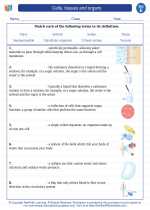Cells, tissues and organs -> vitamin b6
Vitamin B6
Vitamin B6, also known as pyridoxine, is a water-soluble vitamin that plays a crucial role in various bodily functions. It is part of the vitamin B complex, which is important for converting food into energy and for maintaining healthy skin, hair, and eyes.
Sources of Vitamin B6
Vitamin B6 can be found in a variety of foods, including:
- Poultry, such as chicken and turkey
- Fish, such as salmon and tuna
- Vegetables, such as spinach, bell peppers, and potatoes
- Fruits, such as bananas and prunes
- Fortified cereals and grains
Functions of Vitamin B6
Vitamin B6 has several important functions in the body, including:
- Metabolism: It helps the body break down proteins, carbohydrates, and fats from the food we eat.
- Brain development: It is important for brain development and function.
- Immune function: It helps the body produce antibodies and maintain a healthy immune system.
- Red blood cell production: It is involved in the production of hemoglobin, which carries oxygen in the blood.
Deficiency and Overdose
A deficiency of vitamin B6 can lead to symptoms such as anemia, weakened immune function, dermatitis, and neurological problems. On the other hand, an overdose of vitamin B6 can cause nerve damage and numbness in the extremities.
Recommended Intake
The recommended dietary allowances (RDAs) for vitamin B6 are as follows:
- Children 1-3 years: 0.5 mg/day
- Children 4-8 years: 0.6 mg/day
- Children 9-13 years: 1.0 mg/day
- Teens 14-18 years (boys): 1.3 mg/day
- Teens 14-18 years (girls): 1.2 mg/day
- Adults 19-50 years: 1.3 mg/day
- Pregnant teens and women: 1.9 mg/day
- Breastfeeding teens and women: 2.0 mg/day
Study Guide
To study the topic of Vitamin B6, consider focusing on the following key points:
- Understand the sources of Vitamin B6 and the role of a balanced diet in obtaining this vitamin.
- Learn about the functions of Vitamin B6 in the body, including its role in metabolism, brain development, and immune function.
- Identify the symptoms of Vitamin B6 deficiency and the potential risks of an overdose.
- Memorize the recommended dietary allowances for different age groups and specific populations.
By mastering these key points, you will have a solid understanding of Vitamin B6 and its importance for overall health and well-being.
.◂Science Worksheets and Study Guides Fifth Grade. Cells, tissues and organs

 Worksheet/Answer key
Worksheet/Answer key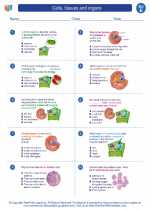
 Worksheet/Answer key
Worksheet/Answer key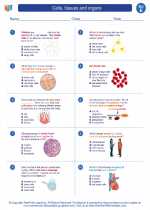
 Worksheet/Answer key
Worksheet/Answer key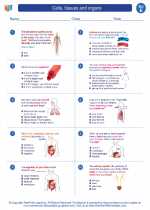
 Vocabulary/Answer key
Vocabulary/Answer key
 Vocabulary/Answer key
Vocabulary/Answer key
 Vocabulary/Answer key
Vocabulary/Answer key
 Vocabulary/Answer key
Vocabulary/Answer key
 Vocabulary/Answer key
Vocabulary/Answer key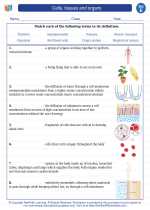
 Vocabulary/Answer key
Vocabulary/Answer key